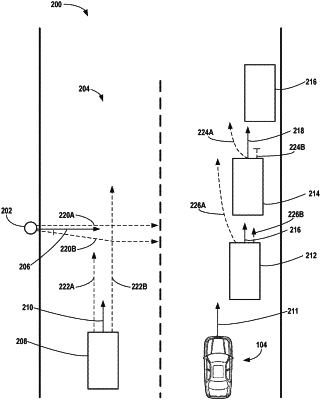| CPC B60W 50/0097 (2013.01) [B60W 30/00 (2013.01); B60W 30/0953 (2013.01); B60W 30/0956 (2013.01); G05D 1/0088 (2013.01); G05D 1/0214 (2013.01); G06T 7/20 (2013.01); G06V 20/58 (2022.01); G06V 20/584 (2022.01); G08G 1/166 (2013.01); B60W 2554/00 (2020.02); G06T 2207/30241 (2013.01); G06T 2207/30261 (2013.01)] | 18 Claims |

|
1. A computer-implemented method comprising:
obtaining data associated with a first object and a second object within a surrounding environment of an autonomous vehicle,
wherein the first object comprises a first vehicle, a first pedestrian, or a first bicycle, and wherein the second object comprises a second vehicle, a second pedestrian, or a second bicycle;
generating a graph model, wherein the graph model comprises vertices indicative of respective trajectories of the first object or the second object and edges indicative of a dependency between the respective trajectories;
determining an interaction between the first object and the second object based at least in part on the graph model, the data associated with the first object and the second object, and at least one traffic rule;
determining, based at least in part on the interaction, a potential intersection between the respective trajectories of the first object and the second object;
determining, based at least in part on the potential intersection, a secondary interaction between the first object and the second object, the secondary interaction indicative of a modified predicted movement of the first object or a modified predicted movement of the second object that avoids the potential intersection; and
controlling motion for the autonomous vehicle based at least in part on the secondary interaction.
|